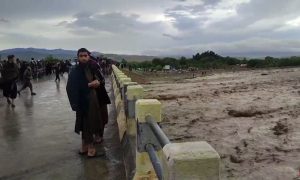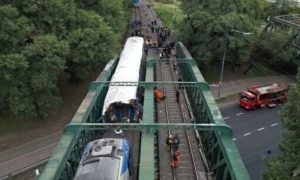On 12 Jan 2024, a five-year-old Afghan child was brutally murdered in Karachi. As per his father’s statement, he was killed during a dispute over a garbage collection point. The other party, also Afghan, had threatened the child about picking trash from a particular point. Disobedience took the young lad’s life. Though the incident was unspeakably tragic, as a former policeman, I wondered how many more miseries the little child had been spared by his early demise.
In my childhood, a novel titled Aali par kia guzri (What Happened to Aali) by Aziz Asri was quite well-known among children. It is a poignant tale about abduction and the professional kidnappers who use children for begging and child labour. In the novel, a cruel mafia amputates children’s limbs and then forces them into beggary or work. Happily, Aali, a brave boy, manages to break his shackles and flee their captivity.
As I read the news, the father of the murdered child seemed to me to be as bad as the villains in that novel. How could a father force their own child into such hazardous labour? However, we cannot absolve ourselves by blaming his poverty; the cruelty and apathy of our state, as well as the selfishness of our community, is as much a cause of this malaise.
Admittedly, the abduction of children and their subsequent enslavement in forced labour, begging and prostitution is not a new phenomenon. It has been going on for centuries. We all know the tale of Prophet Yousuf, about how some people rescued him from a well he was trapped in, only to mercilessly sell him at a slave market in Egypt. Similarly, Umrao Jan Ada by Mirza Hadi Ruswa is a sorry tale of a young girl abducted from Faizabad, India and then sold to the sex industry. We innocently continue with our days, thinking the modern world is free from such cruelties. Sadly, the truth is far more bitter.
Rights organisations estimate that as many as 3,000 children go missing in Pakistan each year. Some are kidnapped, and some run away. As a police officer, I came across many such cases. We considered the parents lucky if their children were recovered, even if they were dead. The pain of someone whose child is never found is something most of us cannot comprehend.
The Roshni Research and Development Welfare Organisation is a non-governmental organisation (NGO) dedicated to finding missing children. It runs a 24-hour helpline, 1138, which has helped over 30,000 families and is credited with safely recovering more than 9,600 missing children. At a recent event, Roshni Helpline revealed that it had received 2,633 missing persons cases in 2023. Of these, around 2,000 were thankfully recovered. However, more than 650 were still missing at the time. According to the NGO’s data, over the last five years, 70% of the cases reported to it involved boys, especially children between 11 and 17 years of age.
The abduction of children and their use in various nefarious practices seems to be increasing at an alarming pace. For example, there has been a distressing increase in kidnappings and mysterious disappearances of children in Karachi. It appears that the parallel growth in begging as a profession explains this rising trend. Some estimates have put the number of beggars in Pakistan to be as high as 10% of the population. The Asian Human Rights Commission (AHRC) says there are anywhere between five to 25 million beggars in Pakistan, with as many as 1.2 million children on the streets of major urban cities.
Among the various factors believed to be contributing to the growth in beggary, financial, social and biological factors are considered by researchers to be the most significant ones. UNICEF estimates that about half of Pakistan’s population is under the age of 18. Millions of these children are out of school, undernourished and living in poverty. In simple terms, for someone who is already poor and who faces unemployment because of their limited physical and intellectual means (thanks to undernourishment and lack of education), beggary and forcing their children into labour is often the only way out. The UN estimates around 49% of Pakistan’s population is living in poverty, and 31% of its youth are unemployed. How will beggary not thrive in such conditions?
It is a harsh reality that children, not in the hundreds but in the hundreds of thousands, have been forced into labour and begging in Pakistan. For an entire socioeconomic class, more children mean more earning members of the family. So desperate are they that the concept of giving children an education and a dignified life seems unthinkable to their minds. Unfortunately, there are many professionals ready to prey on their misery. It is these professionals who run the informal ‘markets’ through which children are enslaved and sold, and it is the presence of such markets that entices other vicious criminals, such as kidnappers, to see children as mere commodities. It comes as no surprise when Roshni Helpline reports that 99% of missing children hail from the working class.
Article 11 of Pakistan’s Constitution guarantees protection from slavery and forced labour. Despite laws at the federal and provincial levels prohibiting child labour, enforcement is very weak due to inadequate state oversight. Granting the police direct authority to address offences related to this right is an urgent necessity. For beggary, forced labour, and child abduction to be eliminated, everyone has to chip in. They are a burden on society that we must collectively bear and eliminate. Lots of little lives depend on our swift action.






















